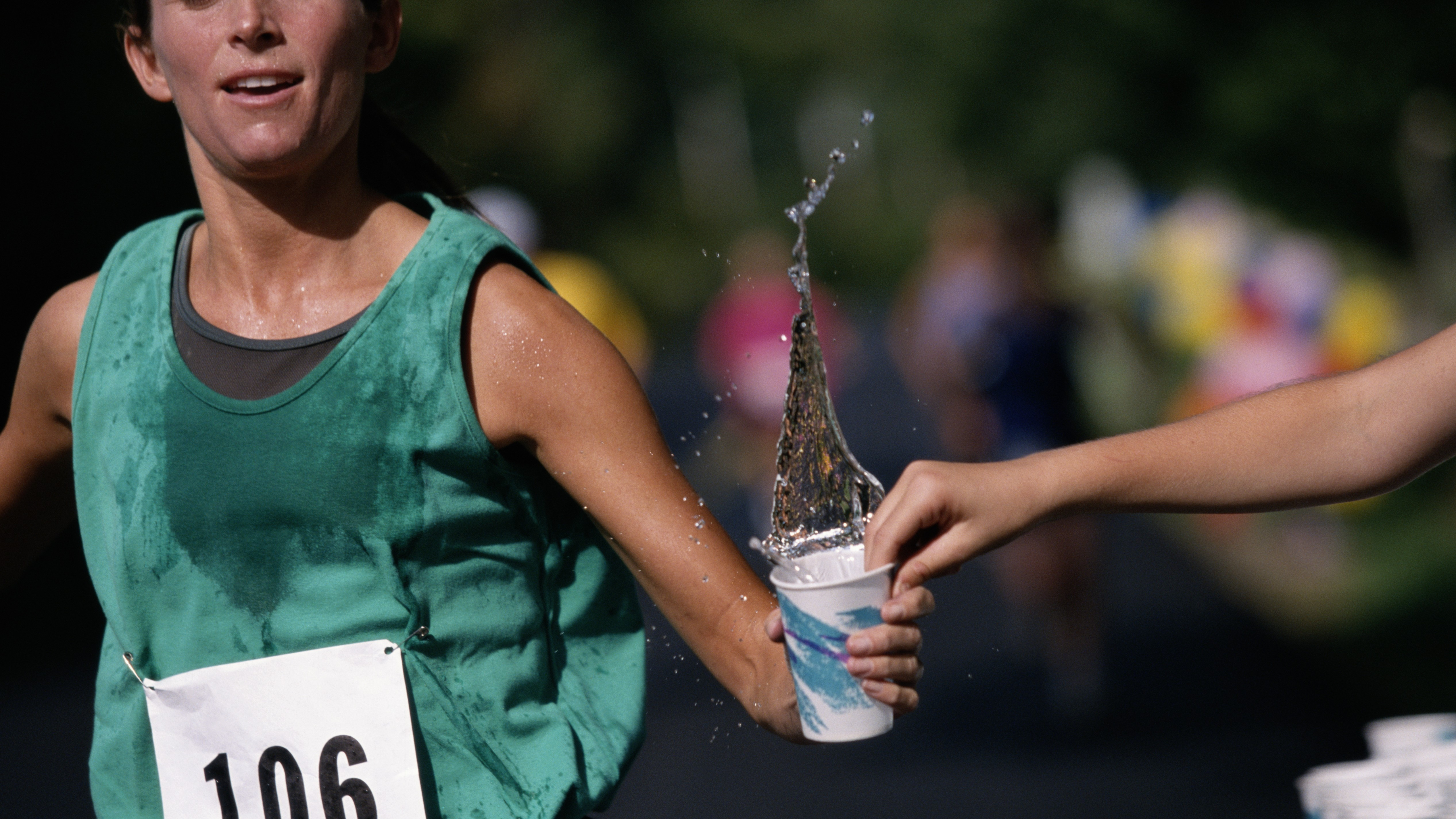11 race day hacks for your next event: from sticky gel hands to free energy boosts
Tips and tricks to make your 10k, half marathon, or marathon go that little bit smoother (from experience)

The training is done and your bag is packed, but whether you're running your first race or your 50th, there are always some little tweaks you can make before, during and after to make the whole experience that little bit easier and more pleasant.
I'm not talking about obvious things like laying out you kit before bed, checking out the race profile, or wearing sunscreen. These are the little tricks I've picked up through years of mass-participation events. They might not boost your times, but you'll be glad you knew about them.
Before the race
Don't wreck your best top
Technical fabrics don't appreciate being stabbed, so although safety pins will keep your race bib in place, they can also leave nasty snags all over your best running top.
I've found that button-style clips don't work particularly well and have a tendency to pop undone. Instead, I'd opt for magnetic bib holders, like these ones that cost $15 for a set on Amazon. Just keep them well away from children and pets, and don't let them get anywhere near your phone or bank cards.
Avoid sticky gel hands
Energy gels are a great way to refuel during longer distances, but they're hard to open with your teeth while running, and so darn sticky. To get the benefits without the mess, invest in one or two reusable gel bottles that you can fill from a large pouch before the race.
I've tried a few different types, and heartily recommend the type with soft bite valves rather than any type of twist cap, which are easy to turn the wrong way when your mind is on the road ahead, resulting in half a gel spilling up on the floor. These $9.99 bottles from Amazon are very similar to the ones I'll be carrying at the Manchester Marathon next week. Each one holds two 75ml portions of gel.
Not sure when to slurp them down? Our guide when to use running gels is full of helpful guidance.
Advnture Newsletter
All the latest inspiration, tips and guides to help you plan your next Advnture!
Take (just a little) extra water
Race organizers do their best, but there often aren't enough water stations at races, particularly in warm weather, or they aren't ideally positioned. For races over 10km, having a little water of your own will give you a handy backup and make sure you don't have to complete half the distance before you can get some hydration. I like to take a lightweight hydration pack with a little water in a bladder (mine is an Osprey Hydraulics 2.5L Reservoir, which you can get for $33 at Amazon).
You don't have to weigh yourself down by filling it all the way – just take a bit to supplement what's provided on the route.
Be toilet-ready
The toilets at race villages are often a disaster area, and it's not unusual to find no paper when you finally get to the front of the queue. Pack a little before you leave home, and feel like a champion. Taking some hand sanitizer is a good move as well. It's not as good as soap and water for killing nasties (particularly norovirus), but it's better than nothing if there's no alternative.
During the race
Don't be grabby
You've finally reached the first water station! Now keep going just a few feet before trying to get a drink. People will be falling over themselves trying to take a bottle or cup from the first volunteer handing them out, so continue further down the line and you'll be able to take one without being knocked off your feet. Be careful of discarded cups when rejoining the race and put your finished one in a bin when you're done.
Pinch the cup
Drinking from a cup while running is seriously tricky, and you can easily end up spilling half your precious water down yourself, or swallowing a lot of air as you try to gulp it down. Thankfully, there's a way to avoid that: pinch the rim of the cup to make a little spout and you'll be able to pour the water into your mouth without losing a drop. It's a technique I used during the Bath Half Marathon last month, and it really works.
No gummies in cold weather
That gummy candy you're being offered by a kind spectator might be tempting, but on a cold day it'll be like trying to chew rubber. At best you'll struggle, and at worst it might go down the wrong way (speaking as someone who nearly inhaled a gummy bear on a winter half marathon). Unless you've been training with it and have the necessary jaw muscles, give it a miss and stick to gel instead.
High-five the kids (gently)
High-fives are free energy! If anyone is holding out their hand for one, give it a gentle tap. I swear, it's better than a handful of candy if you're starting to flag. Of course, this only applies if your hands are clean (see the note on Port-a-Potties above). If not, keep those grubby mitts to yourself.
After the race
Keep moving
People will tend to queue up by the first person handing out medals, T-shirts or goodie bags, but if you keep moving along you'll be able to grab one without standing in line. The people doing this are usually volunteers, so although you're tired, be sure to smile and thank them for their time. A little appreciation goes a long way.
Change your top ASAP
You'll cool down fast once the event is over, but you can avoid getting chilled by changing your sweaty top as soon as possible once you've stretched. Getting the wet clothing off your skin is much better than just putting a warmer layer on over the top. A thin base layer and lightweight windbreaker will work well in most weather conditions, and can be easily stashed in the backpack you leave at the bag drop.
Make a fast exit
It's nice to take things easy after the race, but getting back to the railway station, car park, or bus as quickly as possible after a mass participation event will make your journey home so much faster. The longer you leave it, the busier things will get, and the more likely you'll end up stuck in a huge queue trying to leave.
Make sure you have your preferred recovery snacks in the backpack you leave at the bag drop, and demolish them on your way home.
- The best cheap running shoes: affordable footwear for roads and trails

Cat is Homes Editor at TechRadar and former editor of Advnture. She's been a journalist for 15 years, and cut her teeth on magazines before moving online. She helps readers choose the right tech for their home, get the best deals, and do more with their new devices.
